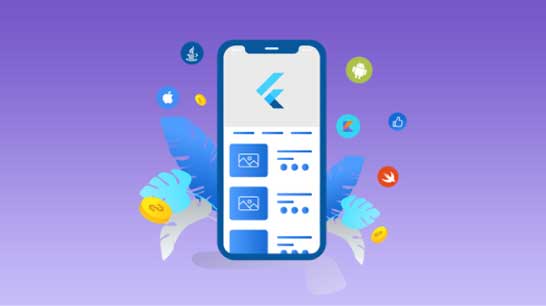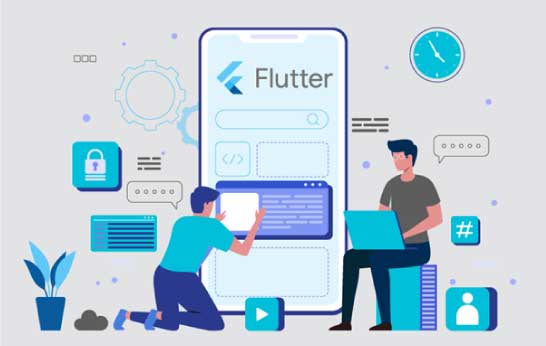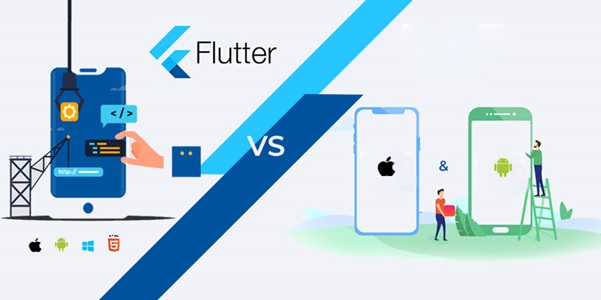Google created an amazing free and open-source mobile UI framework, Flutter, which was released in May 2017. It is a cross-platform toolkit that intends to build beautiful and native applications for Android and iOS from a single code base by using a reactive and modern framework. This means any app development company can use one programming language and one codebase to create two different apps for Android and iOS.
Flutter comprises of two important parts:
- An SDK-
It stands for Software Development Kit, and it’s a collection of tools that helps to develop your applications. This incorporates tools to compile your code into native machine code (for Android and iOS)
- A Framework-
A framework or a UI library is a collection of reusable UI elements like text inputs, buttons, sliders, etc. You can personalize these elements according to your need.

Flutter doesn’t use OEM widgets but offers its own ready-made widgets to design your iOS and Android application.
To do app development with Flutter, one needs to know Dart, which is a fast, object-oriented programming language that is easy to learn and was created in October 2011 by the mighty tech giant Google. It focuses on front-end development, and an app development company can easily use it to create mobile and web applications.
Flutter is a cross-platform UI tool that allows apps to interface underlying platforms directly as well as allow code reuse for operating systems like Android and iOS. The platform aims to share as much code as possible and enable developers to deliver high-performance applications that feel natural on different platforms and embracing differences where they exist.

During the development, Flutter applications run in a VM, which offers a Hot-Reload of changes without requiring a complete recompile. For the release, the apps are compiled straight to the machine code, whether it is ARM instructions or Intel x64, or JavaScript if you are aiming at the web.
Flutter is constructed as a layered, extensible system that exists as a sequence of independent libraries where every layer depends on the underlying layers.
Benefits of Flutter:
Each and every app development company must consider using Flutter for its innovative features and qualities. Such as –
- Great Productivity- As it is a cross-platform UI framework; it uses the same code base for Android and iOS app. This helps to save both resources and time.
- Impressive performance- Dart is a programming language, and it needs to be compiled to native machine code, and Flutter has its own widgets, so you don’t have to access OEM widgets. Not only this, but also it is the only mobile SDK that offers reactive views without involving a JavaScript bridge. This feature helps to open the app rapidly while decreasing performance issues.

- Simple and Fast Development- Flutter has a Hot-Reload feature that allows you to instantly view the changes made in the code simulators, emulators, and hardware. The changed code reloads in few seconds while the application runs in the background, and there is no need to restart. This is a great invention for building UIs, adding features, and fixing bugs. Working with Flutter only requires a basic knowledge of coding.
- Open-Source- Both Dart and Flutter are open-source and free to use. It provides community support as well as extensive documentation to help out with any problem you may encounter.
- Compatibility- Widgets are an important part of the application. You will never feel any compatibility issues on different OS versions. This means you have to spend less time on testing.
Conclusion:
Flutter framework is combined with UI rendering components, navigation, management, device API access, testing, and independent libraries. This helps to decrease the use of third-party libraries. It is a faster and dynamic mobile app development utility. The Hot-Reload feature makes stuff easy while improving or experimenting with the application’s look as it takes few seconds to add features and fix bugs.
It is the best platform for start-up MVPs because it requires less investment to develop a mobile application with Flutter; one developer is enough to create your MVP. Flutter works in ace and by using its widgets you can create beautifully personalized UI for your customers.




